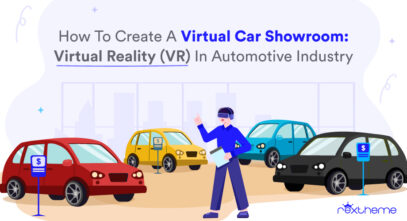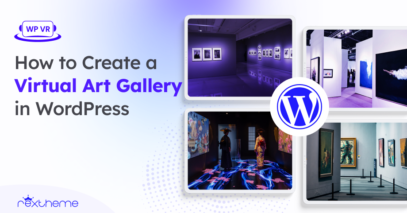Augmented Reality isn’t just a buzzword anymore; it’s actively changing the way businesses connect with customers in all kinds of industries.
I’ve seen it go far beyond gaming. From letting you try on makeup virtually to placing 3D furniture in your living room, AR makes everyday interactions feel more real, fun, and effortless.
In fact, over 88% of mid-sized companies are already using AR to improve customer experience, according to Deloitte.
In this guide, I’ll walk you through 15 real-world AR examples across different industries. You’ll see how they work, why they’re so effective, and how you might apply something similar in your own business.
Let’s dive in,
TL;DR – 15 Augmented Reality Examples Across Different Industries
- Augmented Reality (AR) overlays digital elements (3D objects, effects, info) on the real world through smartphones or AR glasses.
- It works by using your device’s camera and sensors to map real environments and place digital content in real-time.
- The ability of AR lies in making shopping and decision-making more interactive, visual, and fun for users across industries.
- Popular industries using AR include:
– Retail: Try before you buy (e.g., IKEA furniture, makeup try-ons)
– Healthcare: AR-guided procedures like vein finding
– Education: Interactive AR lessons and field trips
– Real Estate: View staged homes virtually
– Marketing: Experiential ads like Pepsi Max AR bus stop - An ideal AR experience should:
– Be mobile-friendly and lightweight
– Use eye-catching visuals or product overlays
– Add value to user decisions (not just gimmicks)
– Be easy to deploy and update
– Feel real enough to trigger impulse engagement - Here are 15 of the best real-world AR examples in action:
– IKEA Place App – visualize furniture at home
– L’Oréal AR Makeup Try-On – test makeup virtually
– Nike Virtual Try-On – try sneakers with your phone
– Porsche AR Visualizer – Customize luxury cars in 3D
– AccuVein – vein projection for safer injections
– Google Expeditions – AR field trips for students
– Akular AR Tours – walk through staged real estate
– Pokémon GO – iconic AR mobile gaming
– Houzz AR Tool – preview furniture in your room
– Boeing AR Maintenance – live repair instructions
– TimeLooper – historic AR tourism guides
– Coachella AR Filters – live AR concert effects
– Pepsi Max AR Bus Stop – viral AR street campaign
– GAMMA AR – overlay blueprints at construction sites
– Kabaq Menu AR – see food in 3D before ordering - Final Verdict: If you want to stand out, build brand loyalty, or drive more informed purchases, AR is your answer. And if you are looking for any kind of VR-related tool, then WPVR will be the best option for making virtual tours.
What is Augmented Reality (AR) & How Does It Work?
Augmented Reality (AR) lets you see digital things, like 3D objects or animations, on top of the real world using your phone or tablet. It’s like bringing virtual content into your everyday surroundings.
When you open an AR app, your device uses the camera and sensors to understand where you are. Then, it adds digital elements right into your view, like placing a virtual chair in your room or trying on glasses without wearing them.
For example, if you’re shopping online and use an AR feature to see how a new pair of headphones would look on you, that’s AR helping you make faster and more confident decisions.
Why You Need Augmented Reality in Your Industry
I have listed some points of AR. Now, here’s why augmented reality is important for your industry and how it can help you stand out:
- Enhance Product Experiences: AR lets you create interactive product experiences that bring your items to life. Using AR viewers or mobile AR, customers can see products in their natural environment, boosting confidence and reducing returns.
- Engage More AR Users: Platforms like Snapchat and apps using Spark AR allow you to reach millions of AR users daily. Integrating AR into marketing products makes your campaigns stand out and connect better with audiences.
- Blend Physical and Virtual Worlds: AR layers virtual information over the physical world, helping customers visualize how products fit their space. Apple Vision Pro and Google AR are pushing this technology into everyday life.
- Improve E-commerce Experience: With virtual product viewers and AR mirrors, you can let customers try before they buy online. This interaction design increases satisfaction and drives more conversions.
- Stand Out in Different Industries: Whether in architecture, learning environments, or retail, AR concepts transform how businesses engage clients. Using AR cameras and display technology, you bring virtual metaspaces closer to reality.
- Speed Up Buying Decisions: AR removes guesswork by showing virtual flooring solutions or simulated environments directly in customers’ homes. This clarity shortens sales cycles and increases impulse buys.
- Leverage Latest Projects & Tools: AR companies like Reydar Solutions offer sample viewer demos that help you test AR integrations easily. Developers can customize these to fit your brand and product needs.
- Create Memorable Marketing Campaigns: Using AR objects and virtual information in ads captures attention better than traditional methods. Campaigns with AR layers get more shares and higher engagement rates.
- Utilize Advanced Processors and Hardware: New devices like VR headsets and AR glasses improve AR experiences with smoother performance and better visuals. These tools make your AR content more immersive.
- Integrate Seamlessly with Everyday Life: AR is no longer futuristic; it’s part of daily routines through apps like Pokémon GO and Snapchat filters. Embracing this technology keeps your business relevant and innovative.
Virtual reality in different industries also has some pros and cons. You can also check out this guide to learn more about the pros and cons of virtual reality.
Difference Between Augmented Reality vs Virtual Reality
| Feature | Augmented Reality (AR) | Virtual Reality (VR) |
| Definition | Adds virtual elements to your real environment | Fully immersive digital environment |
| User Experience | Blends digital info with the physical world | Replaces the physical world with a virtual one |
| Equipment Needed | Smartphones, AR glasses, AR viewers | VR headsets, motion controllers |
| Interaction | Interacts with both real and virtual objects | Interacts only within the virtual environment |
| Common Uses | Usually, mobile and wearable devices | Gaming, training simulations, virtual tours |
| Mobility | Often requires a stationary setup or dedicated space | Enhances the real world with extra info |
| Examples | Pokémon GO, IKEA Place, Snapchat filters | Oculus Rift, HTC Vive, PlayStation VR |
| Impact on User | Enhances real world with extra info | Creates a fully new and separate reality |
- You can also learn more about different types of virtual reality to get more ideas from it.
15 Best Augmented Reality Examples by Industry
Now that you understand what augmented reality is and why it matters, it’s time to explore how different industries are actually using it.
Below, I’ve listed 15 powerful AR examples that show exactly how businesses are using this technology to boost engagement, improve customer experience, and drive results.
1. Retail – IKEA Place App
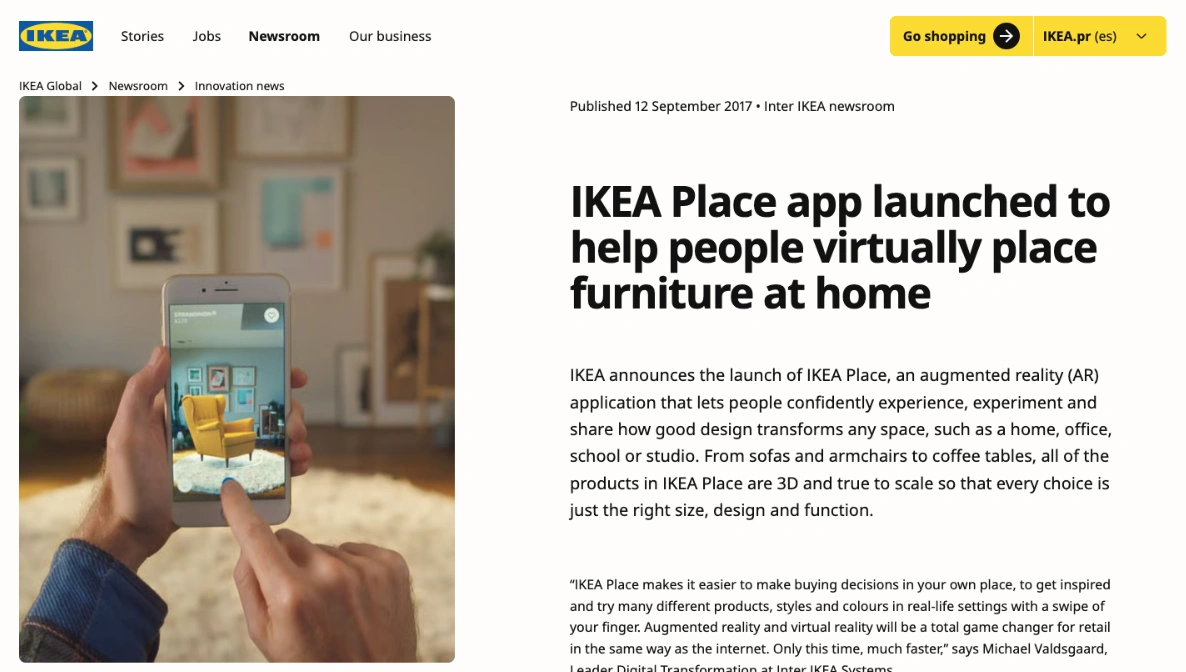
If you’ve ever wondered how a sofa would look in your room, IKEA Place makes it easy. Just point your phone and see the furniture placed virtually in your space.
This app uses AR to help you explore how products fit before buying. You don’t have to guess sizes or styles anymore; it’s like trying furniture without lifting a thing.
It saves time, reduces returns, and makes online shopping way more fun. If you sell physical products, this kind of AR can seriously upgrade your customer experience.
2. Beauty – L’Oréal AR Makeup Try-On
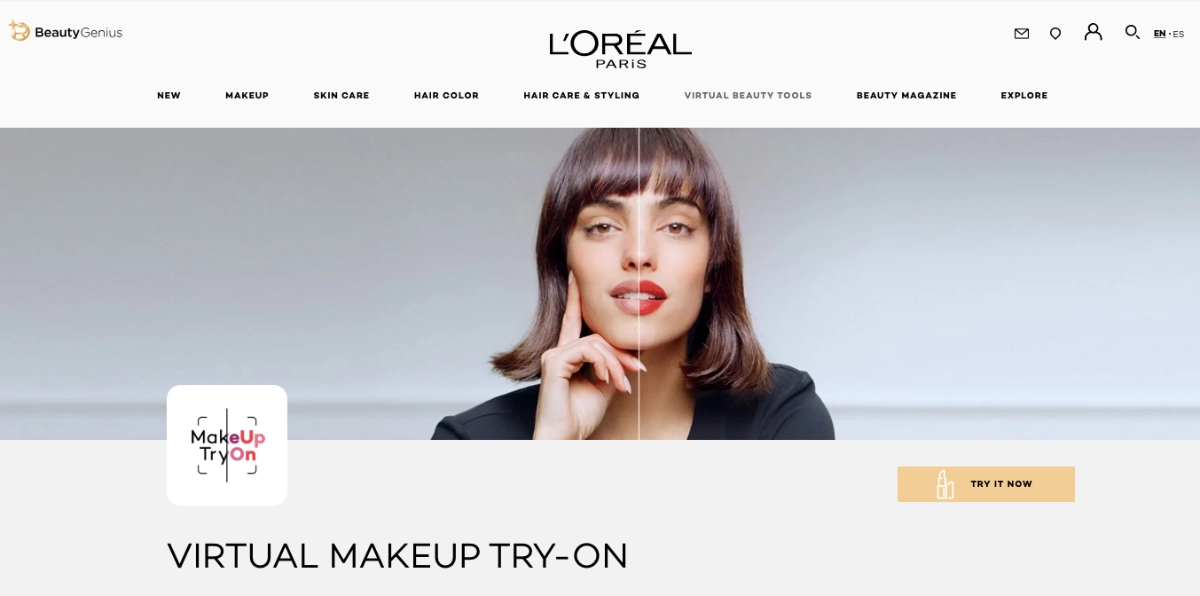
Choosing the right makeup online can be tricky, but L’Oréal’s AR tool solves that. With just your phone camera, you can try on lipstick, foundation, and more in real time.
This AR experience helps you see exactly how shades look on your face—no guesswork, no regrets. It builds confidence and makes online beauty shopping feel personal.
If you’re in the beauty industry, this kind of interactive experience can turn curious visitors into loyal buyers who trust your brand.
3. Fashion – Nike Virtual Try-On
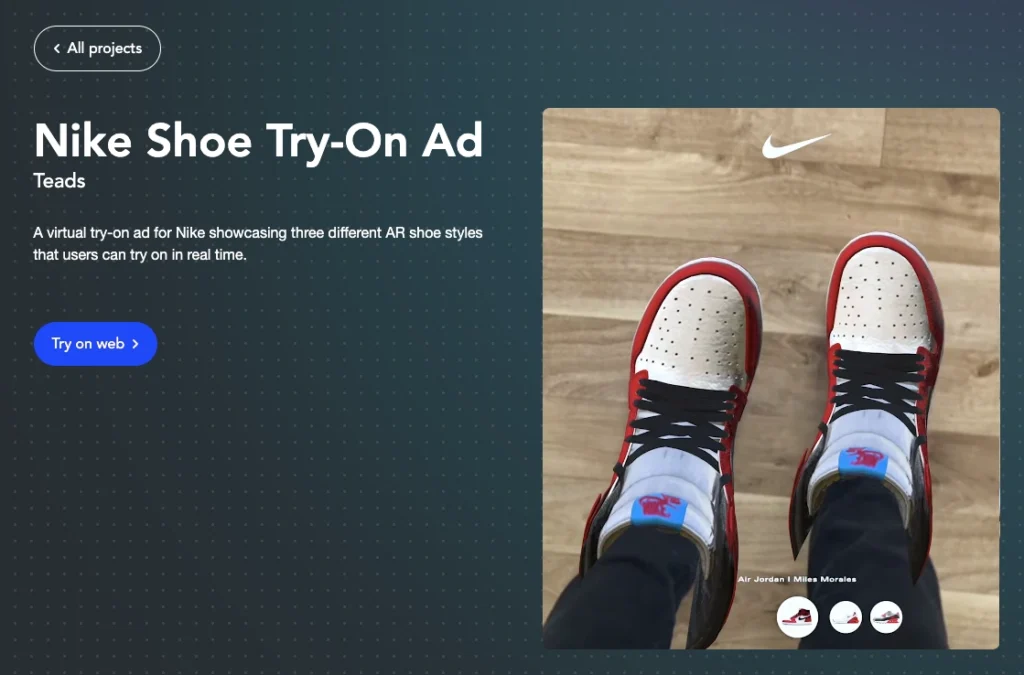
Nike’s Virtual Try-On lets you see how sneakers look on your feet using just your smartphone camera. It’s fast, fun, and feels like trying on shoes in a real store—without leaving home.
You simply point your camera, pick a pair, and the app shows the shoes on your feet in real time. It removes hesitation and makes the buying decision easier.
If you’re in fashion, this kind of AR experience keeps your customers engaged and reduces returns by helping them choose the right style the first time
4. Automotive – Porsche AR Visualizer
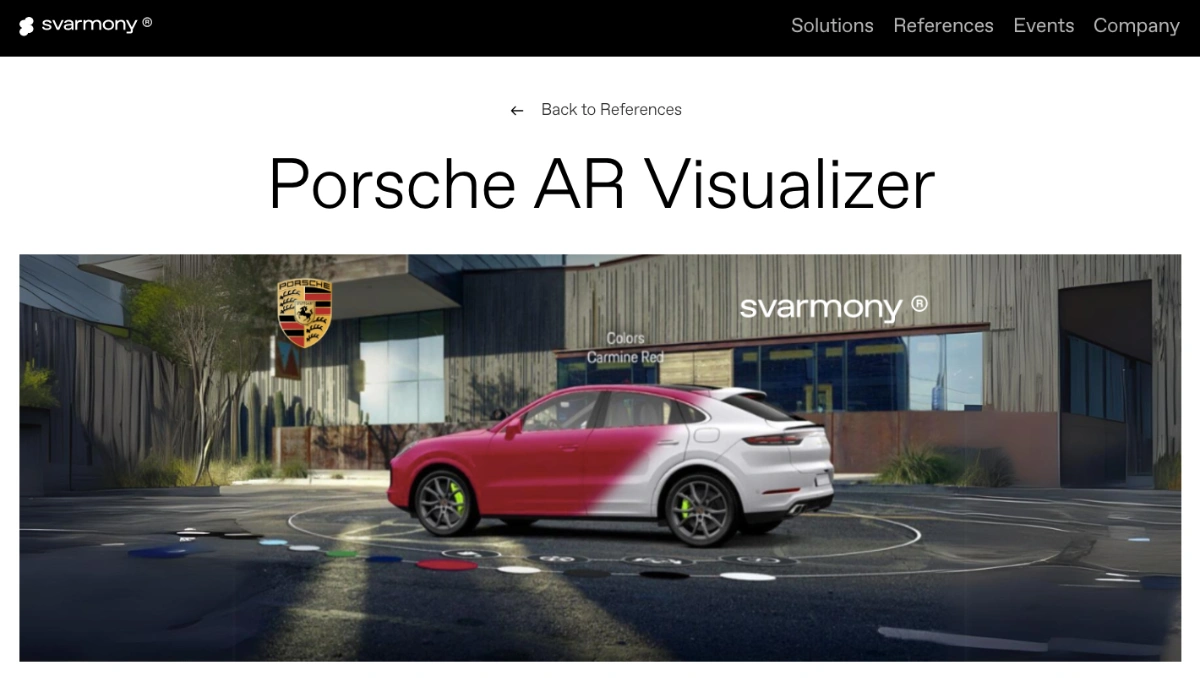
Porsche’s AR Visualizer lets you place a full-size, 3D model of your dream car right in your driveway or garage using your phone. It’s like having a luxury showroom wherever you are.
You can explore the car’s design, change colors, and view every angle in real time. This makes the buying experience feel personal and exciting, before even visiting a dealer.
If you’re in the automotive industry, offering this kind of AR experience helps customers explore high-ticket items with confidence and builds strong brand interest early in the journey.
5. Healthcare – AccuVein
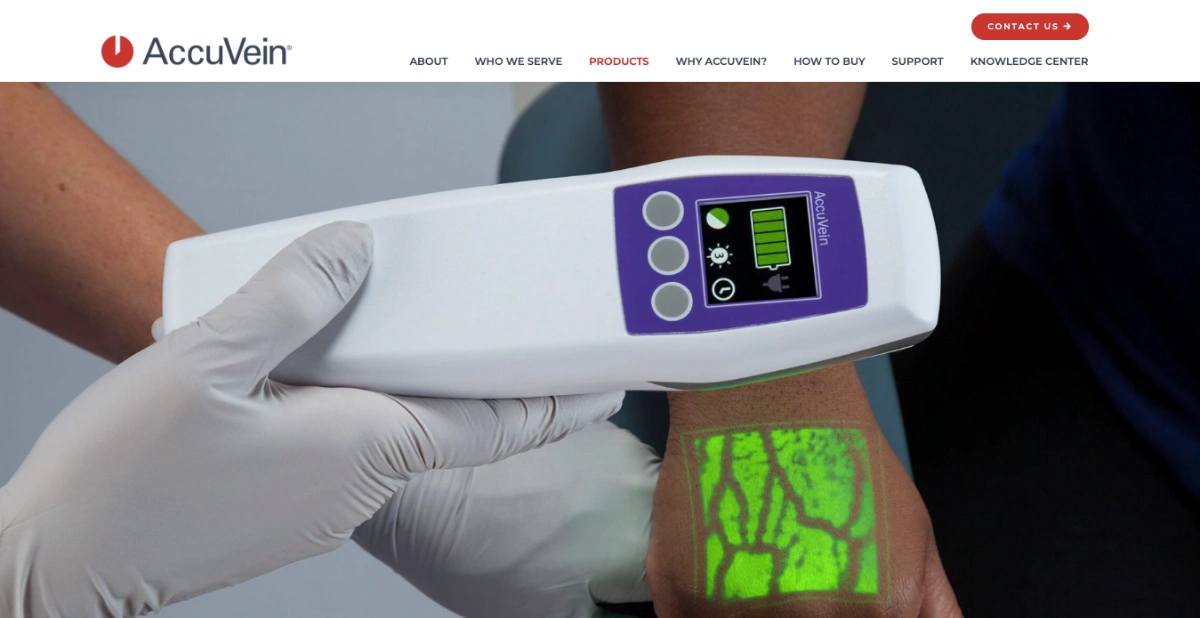
AccuVein uses augmented reality to project a visual map of veins directly onto a patient’s skin. This helps medical professionals locate veins faster and with greater accuracy.
For example, during blood draws or IV insertions, the AR overlay guides where to insert the needle, reducing pain, stress, and failed attempts for patients.
If you work in healthcare, tools like AccuVein show how AR can improve patient care, boost efficiency, and reduce human error in everyday procedures.
- You can also check out virtual reality in healthcare
6. Education – Google Expeditions
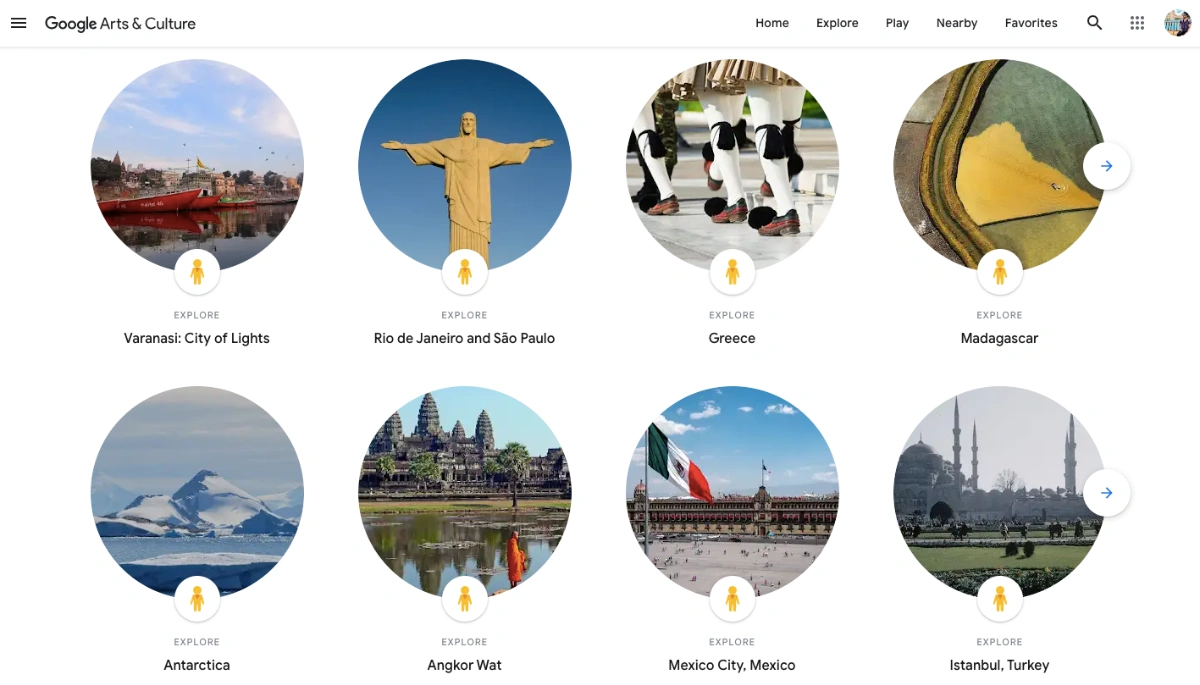
Google Expeditions brought classrooms to life by turning smartphones into AR windows for learning. Students could explore 3D models, environments, and even historical sites in their own classroom.
For example, instead of reading about ancient Rome, learners could walk through a virtual Colosseum and interact with monuments, all using mobile AR.
If you’re in education, this kind of immersive experience can boost student engagement and help learners understand complex topics faster and more effectively.
- If you want to learn about virtual reality in education, you can follow this guide
7. Real Estate – Akular
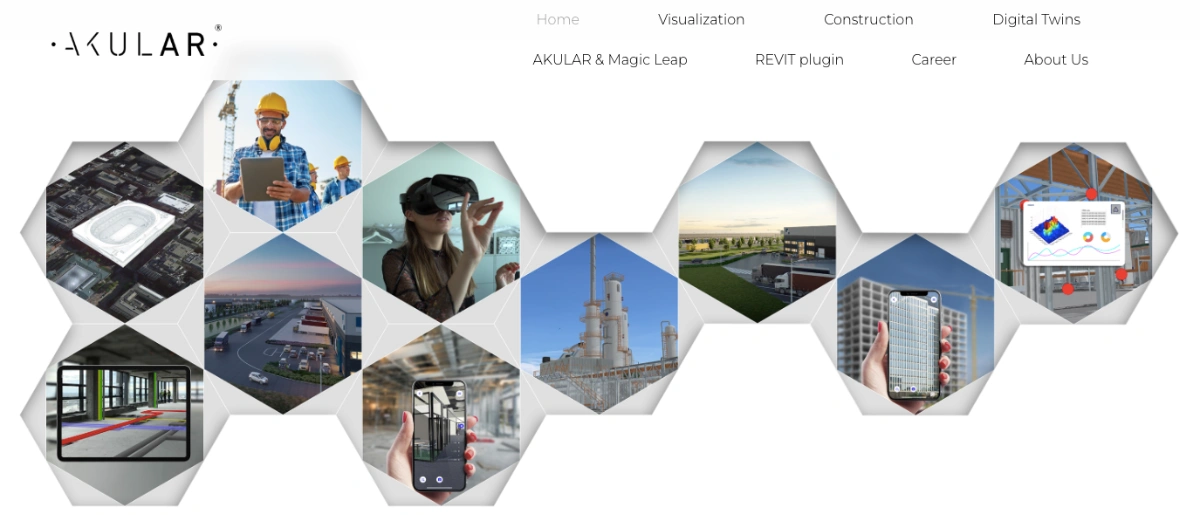
Akular uses AR to let potential buyers view properties in full 3D right from their phones or tablets. It overlays virtual buildings and interiors onto the real-world space.
For example, a client can stand on an empty lot and see how a future house would look—complete with furniture, layout, and finishes—before it’s even built.
If you’re in real estate, this kind of AR experience builds trust, speeds up decision-making, and reduces the guesswork for your buyers.
8. Gaming – Pokémon GO
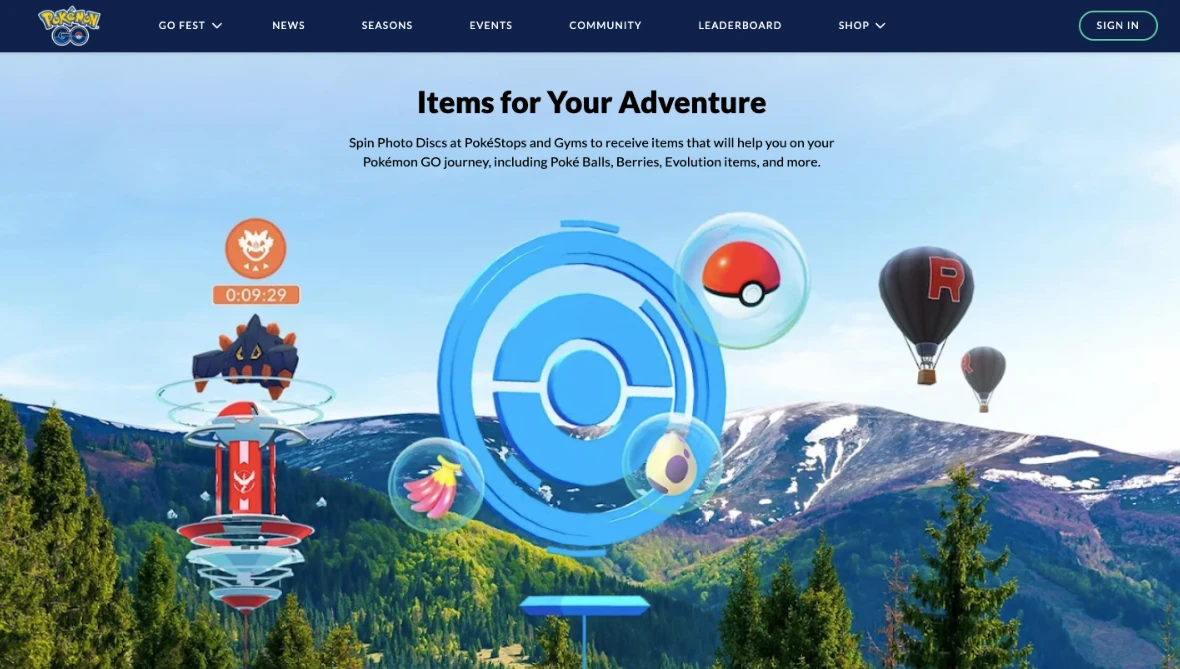
Pokémon GO is one of the most popular AR examples that blends the virtual world with your real environment. It places digital characters into real-world settings using your smartphone’s camera and GPS.
For example, you might be walking through your neighborhood and suddenly spot a Pikachu “sitting” on a park bench—that’s AR in action, making the experience fun and interactive.
If you’re in gaming or app development, this shows how AR can turn everyday life into an exciting, engaging adventure that keeps users coming back.
9. Interior Design – Houzz AR Tool
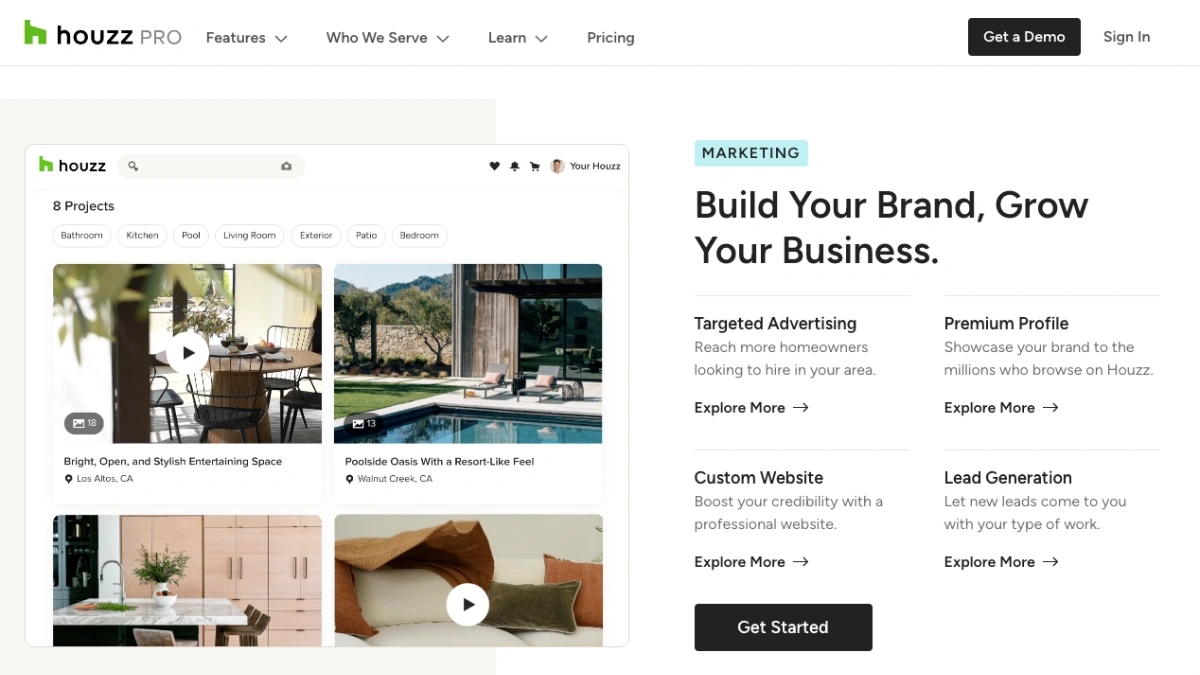
Houzz’s AR tool lets you see how furniture and decor will look in your own home before you buy. You simply point your phone at a room, and the app places 3D models of products in real time.
For example, you can try out a new sofa or a lamp in your living room without moving a thing. This helps you make confident choices and avoid returns.
If you’re in interior design or retail, this tool shows how AR improves customer experience by blending virtual product viewers with real spaces.
- You can also watch out for virtual reality in architecture
10. Manufacturing – Boeing AR instructions
Boeing uses AR to provide technicians with step-by-step 3D repair instructions right where they work. This hands-free guidance helps reduce errors and speeds up complex tasks.
For instance, a technician fixing an aircraft engine can see exactly where each part goes without flipping through manuals. This improves accuracy and saves valuable time.
If you’re in manufacturing, using AR like this can enhance worker efficiency and reduce costly mistakes by overlaying virtual information on real equipment.
11. Tourism – TimeLooper
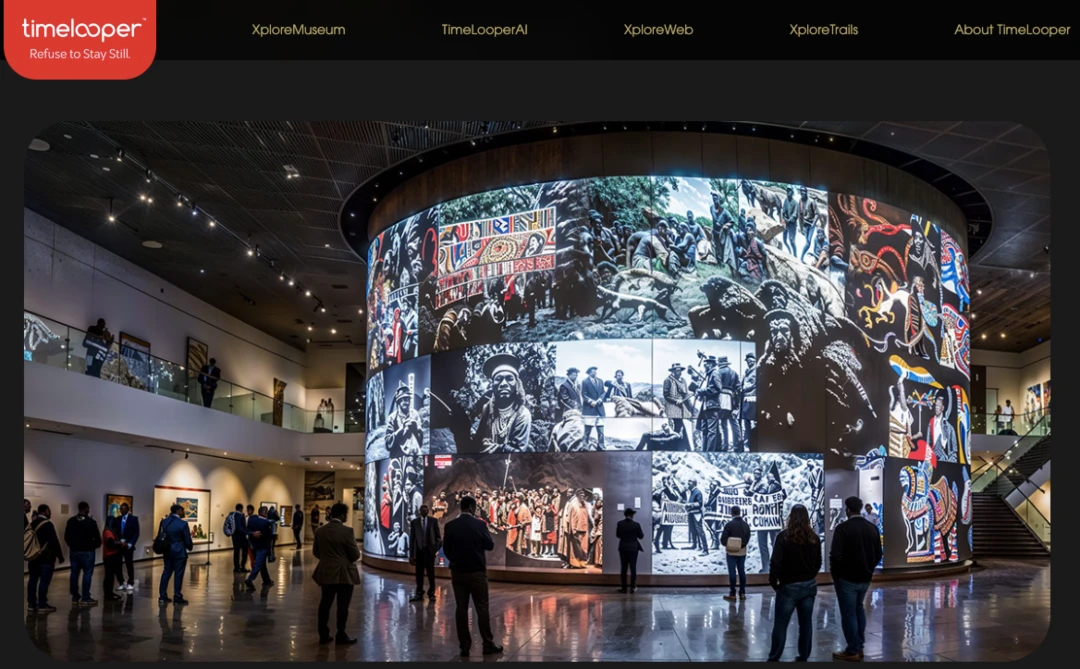
AR city guides like TimeLooper let travelers explore historical sites with interactive AR experiences. You can see famous landmarks come to life with virtual stories and events.
For example, while visiting an ancient ruin, your phone shows how it looked centuries ago, making your trip more engaging and educational. This boosts visitor satisfaction and interest.
If you work in tourism, AR guides can create memorable experiences for your customers by blending virtual information with the physical world.
- Learn more about virtual reality in tourism with more details
12. Events – Coachella AR Filters
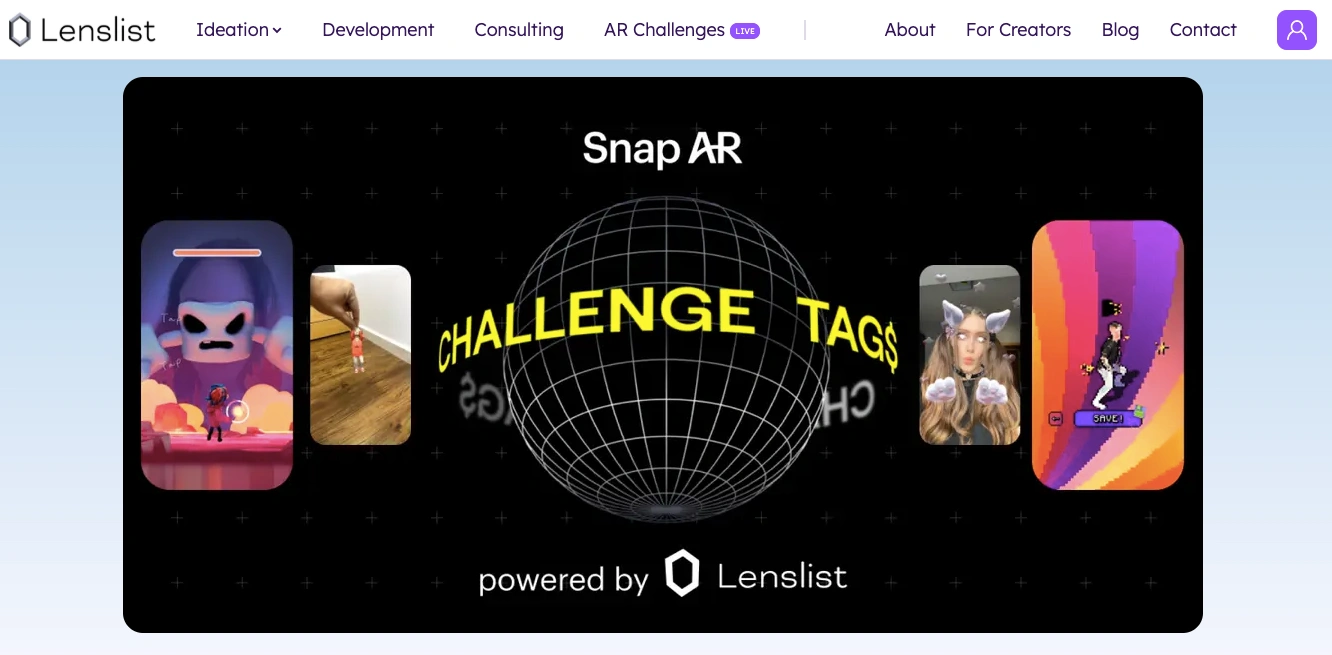
At events like Coachella, AR filters add a fun, interactive layer to the experience. You can use your phone to apply virtual effects and animations during live performances.
For example, festival-goers can take selfies with AR masks or see animated visuals on stage through their devices, making the event more engaging and shareable.
If you’re organizing events, using AR filters can boost attendee interaction and create buzz, turning ordinary moments into memorable ones.
13. Marketing – Pepsi Max AR Bus Stop Ad
Pepsi Max created a viral marketing campaign using AR at bus stops. Passengers saw amazing virtual scenes like UFOs and tigers appear on the bus stop screens.
This unexpected AR experience grabbed attention and created huge social media buzz, making the brand memorable and exciting.
If you want to market your products in a unique way, AR ads like this can help you stand out and connect with your audience creatively.
14. Construction – GAMMA AR
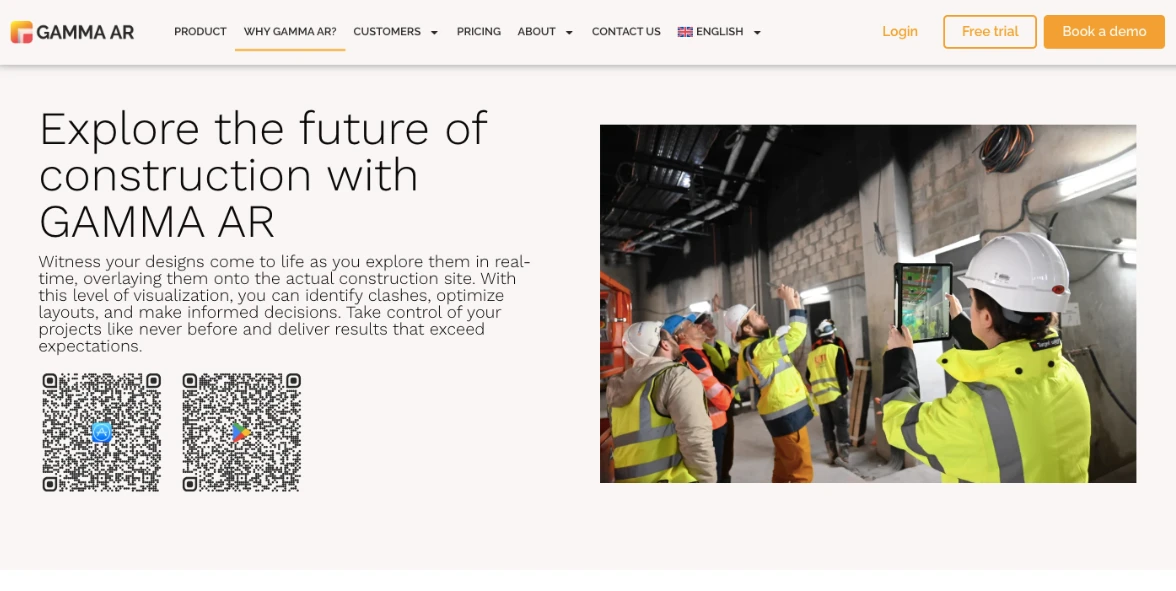
GAMMA AR helps construction teams by overlaying digital blueprints onto real-world sites using tablets or smartphones. This makes it easier to visualize building plans and spot errors early.
By using AR in construction, projects run smoother with fewer mistakes and less delay, saving time and money for everyone involved.
If you work in construction, adopting AR tools like GAMMA AR can greatly improve accuracy and efficiency on your job sites.
15. Food Industry – Kabaq
Kabaq uses AR to let customers see lifelike 3D images of dishes before ordering, making the dining experience more interactive and fun. This helps customers choose meals with confidence.
Restaurants benefit from increased order values and reduced food waste as customers know exactly what to expect. It’s a win-win for both diners and businesses.
If you’re in the food industry, using AR tools like Kabaq can boost customer curiosity and satisfaction, leading to higher sales and better dining experiences.
- You have just learned about different types of augmented reality examples. If you are interested in virtual reality examples, then you can check this guide out.
Conclusion
Augmented Reality (AR) helps you connect with customers by adding digital details to the real world. It makes shopping and experiences more interactive and exciting for your audience.
Virtual Reality (VR) creates a fully immersive environment where people can explore virtual spaces. Both AR and VR have unique benefits depending on what you want to achieve.
AR requires special tools that overlay digital content onto the physical world, while VR lets users step inside completely virtual environments. They serve different purposes but can complement each other.
If you want to create realistic virtual tours to showcase your products or space, WPVR is a great tool to consider.
** FAQs **
1. What are some common AR examples used in business?
- AR examples like virtual makeup try-ons and 3D furniture previews let customers see products in real life. These tools make shopping more interactive and boost sales across industries. Using augmented reality in business helps you stand out with engaging product experiences.
2. How is augmented reality different from virtual reality?
- Augmented reality adds digital info on top of the physical world, while virtual reality creates a fully virtual space. Both have unique uses depending on your industry needs. Knowing the difference helps you choose the right technology for your goals.
3. How can augmented reality improve customer experience in my industry?
- AR layers make your products more interactive and easy to explore, improving customer satisfaction. It helps customers visualize products better, which increases their confidence in buying. This boost in engagement can lead to higher sales and loyalty.
4. What tools can I use to create augmented reality for my business?
- You can create AR with platforms like Spark AR and Google ARCore that are designed for developers and businesses. These tools help you add virtual information to real environments easily. They make it simple to bring augmented reality to your customers.
5. Will using AR increase my eCommerce sales?
- Yes, AR enhances the eCommerce experience by letting customers try products virtually before buying. This reduces returns and increases buyer confidence. Incorporating AR into your marketing products can grow your sales and brand loyalty.
![15 Augmented Reality Examples Across Different Industries [2025]](https://rextheme.com/wp-content/uploads/2025/06/Augmented-Reality-Examples-.webp)
